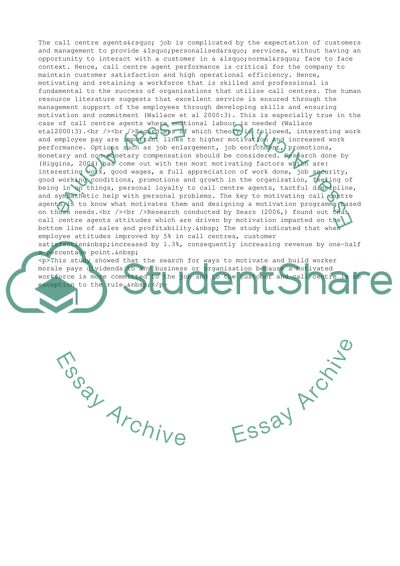Cite this document
(The Relationship between Motivation and Performance of Call Centre Age Research Proposal, n.d.)
The Relationship between Motivation and Performance of Call Centre Age Research Proposal. https://studentshare.org/management/1744045-the-relationship-between-motivation-and-performance-of-call-centre-agents-at-a-telecommunication-industry
The Relationship between Motivation and Performance of Call Centre Age Research Proposal. https://studentshare.org/management/1744045-the-relationship-between-motivation-and-performance-of-call-centre-agents-at-a-telecommunication-industry
(The Relationship Between Motivation and Performance of Call Centre Age Research Proposal)
The Relationship Between Motivation and Performance of Call Centre Age Research Proposal. https://studentshare.org/management/1744045-the-relationship-between-motivation-and-performance-of-call-centre-agents-at-a-telecommunication-industry.
The Relationship Between Motivation and Performance of Call Centre Age Research Proposal. https://studentshare.org/management/1744045-the-relationship-between-motivation-and-performance-of-call-centre-agents-at-a-telecommunication-industry.
“The Relationship Between Motivation and Performance of Call Centre Age Research Proposal”. https://studentshare.org/management/1744045-the-relationship-between-motivation-and-performance-of-call-centre-agents-at-a-telecommunication-industry.


